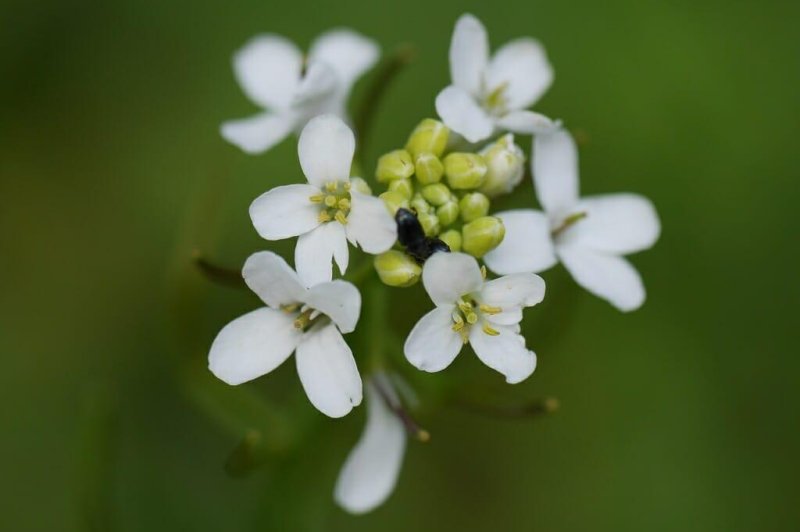Rockcress, Arabidopsis, is often used as a plant model by botanists and geneticists. Photo by Dawid Skalec/University of Wisconsin
Aug. 6 (UPI) -- Scientists have discovered a new mechanism for cellular decision making. The new mechanism, an on-and-off switch in a single protein, controls whether or not a plant puts out flowers.
Until now, scientists assumed the decision to grow flowers was dictated by a pair of proteins. One of the two proteins inhibited flower growth, while the other encouraged leaf growth.
But in analyzing Arabidopsis, or rockcress, a common plant model, scientists at the University of Wisconsin found a new type of protein, called EBS, capable of binding with both activating and repressing chemical marks.
A plant cell begins life with the potential to promote both flower and leaf genes.
"It's like a first-year freshman. They have not declared a major yet," Xuehua Zhong, professor of genetics at Wisconsin, said in a news release. "So how do you maintain this undecided state? One way is what we call epigenetics."
Epigenetics is the study or act of gene expression. Chemical marks on DNA influence which genes are expressed. When different proteins bind with activating or repressing chemical marks, different genes get turned on or silenced, controlling the development of a single cell.
As mentioned, the decision-making process that controls the fate of a cell is typically influenced by two different proteins. But the latest discovery -- detailed this week in the journal Nature Genetics -- suggests EBS, a single protein, can do the jobs of two proteins.
"This one protein has domains that can read both activating and repressing marks, and then make the switch to turn on or turn off," said Shuiming Qian.
Scientists have previously identified proteins capable of binding with multiple modifications, but never with both repressive and active marks.
Previous studies have shown plants without EBS flower early. When scientists disrupted EBS in rockcress, the plants flowered early.
The latest survey showed EBS changes its shape when it's time for plants to flower, allowing it to turn on the flowering activation. Because EBS is similar to proteins found in other organisms, scientists suggests similar epigenetic control mechanisms are likely active among a wide variety of plants and animals.
Researchers think their discovery could help them more precisely control the lifecycles of crops.
"In Wisconsin, we have very short growing seasons," said Zhong. "If we can reduce a plant's life cycle and complete the season earlier, that could be very important for many crops."















